Russian Navy. Sad look into the future. Frigates
In connection with the fact that frigates were not listed in the Navy of the USSR, the assignment of ships of Soviet construction to this class is entirely on the conscience of the author. Of all the ships that were laid in the USSR and were in the Russian Navy as of 1 December 2015 g, theoretically, the frigates of the 11540 project, the last “singing frigate” of the 61 “Sharp” project, could also be attributed to frigates, and also maybe the patrol ships of the 1135 and 1135М Ladny and Pytlivy projects. However, "Sharp-witted" we have already considered in the article devoted to destroyers, and we talked about the TFR of the 1135 project in the section of corvettes. Accordingly, there are only:
SKR of the 11540 project - 2 unit.
Standard displacement - 3 590 t, speed - 30 bonds, armament: 4 * 8 PU ZRK "Dagger", 2 * 4 PU UU anti-ship missile "Uran" (not on "Fearless"), 2 * 3 PU UL "Vodopad-O-Fnad-F") 1 RBU-6000, 1 * 1 100-mm AU AK-100, 2 SIGN "Dirk", hangar for the 1-th Ka-27 helicopter.
In total, three such ships were laid: Fearless, Yaroslav the Wise, and Fog, but the latter was not commissioned, and in 2016 g it was decided to dispose of the unfinished hull. The only difference between the Fearless and Yaroslav the Wise, as far as the author is aware, was the absence of the Uranus PKR launchers on the first one (although the author doesn’t know how to control these missiles).
In fact, if in the Soviet navy and there were ships that could be called frigates, so this project 11540 is. The fact is that the project was originally created as a “response” to numerous frigates of Western countries - the performance characteristics of all modern frigates at that time were analyzed, the best of them was selected (it turned out to be the German frigate “Bremen”) and then the Zelenodolsk Design Bureau got the task to design “such but it’s only better ”- this is how the project 11540 turned out. By the way, to classify project 11540, the 1st Navy Institute proposed introducing a new class“ frigate ”into the official“ Table of Ranks ”of the Russian fleet, but S. G. Gorshkov thought it was unnecessary.
Probably, the commander-in-chief was right after all, because to some extent Fearless continued the line of development of the TFR of the 1135 project, but still with a large bias towards universality. Without a doubt, the air defense system built on the “Daggers”, one 100-mm AU and two SIGNS “Dirk” is much stronger than the “Osa” air defense system and a pair of 76-mm gun mounts. In addition, on the ships of the 11540 project, strike weapons were provided in the form of eight URAN anti-ship missiles, which was completely absent from the 1135 project (the ability of Rastrub-B to fire at ships is still a palliative). In addition, on the “Fearless” type ships, something appeared that was so lacking in the 1135 project - a hangar and a helipad.
Payment for the helicopter and versatility was the increase in displacement by 755 tons and the known weakening of anti-submarine weapons. On the one hand, due to the installation of a more modern and powerful GKM-365 Zvezda-М1 (and helicopter) search capabilities of the Fearless, they improved significantly, but instead of four PLUR, eight torpedo tubes, and two bomb bombets, the ship received six PLUR “ Waterfall-NK "and one bomb.
Such a replacement does not look equivalent. First, the lack of 533-mm torpedoes deprives the ship of a very powerful anti-submarine weapons just at those distances at which his SJC is able to detect enemy SPs. Of course, instead of the PLUR part, the Fearless can use torpedoes, but even in this case the PLUR and torpedoes general ammunition has been halved, which, in general, is not very encouraging. And secondly, the author of this article met with the opinion that in Vodopad-NK there is one very significant drawback, in comparison with other launch systems for PLUR.
The fact is that the same “Rastrub-B” works like this - after a launch, a PLUR flies “on a rocket”, that is, from the moment of exiting the launcher to “arriving” at the point where the enemy PLUR is in the air. At the same time, PLUR “Vodopada-NK” is thrown into the sea, like a torpedo, rocket engines start when PLUR is in the water, ammunition “emerges” and then follows the target like PLUR “Rastruba”. It seems to be - what's the difference, but the nuance is that, unlike the “dry” start, “Rastruba”, the “wet” start, PLUR “Waterfall-NK” produces a lot of noise and the HSC of the submarine is perfectly audible. Thus, the crew of a nearby submarine (and the PLUR “Vodopad-NK” range - up to 50 km) understood that it was attacked and could start responding (maneuvering, launching false targets, etc.). How fair is such a claim to “Waterfall-NK” the author cannot say (not a professional), but such an opinion exists.
But in general, the concept of ships of the project 11540 looks very successful - unless, of course, we consider them as a means of naval struggle in the near sea zone. Moderate displacement (and price) allow for large-scale construction. Good anti-aircraft capabilities make this type of ship a useful tool for ensuring the combat stability of our SSBNs in their deployment areas - in cooperation with anti-submarine aviation and MAPL and DEPL, of course. Air defense is unable to repulse the massive raid of modern aviation - well, even missile cruisers are powerless against such raids. But these ships may well protect themselves from the attack of one or two planes, helicopters or cruise missiles, which makes it possible to use them where massive raids are not expected, but an air threat still exists. The striking capabilities of the ships of Project 11540 are not amazing, but eight “Urani” are a completely ultimatum argument in a “dispute” with corvettes or missile boats, and it is simply pointless to assign the task of fighting aircraft carrier groups to ships of such a small displacement. The ships of Project 11540 turned out to be very successful, and we can only regret that only the Undaunted and Yaroslav the Wise replenished the composition of our fleet.
Thus, as of December 1 2015, we had two ships of the frigate class, laid down during the USSR, all the other ships of this class embarked on the stocks already in the Russian Federation.
Frigates project 11356 - 3 units
Standard displacement - 3 620 t, speed - 30 knots armament: UKSK "Caliber-NK" on 8 missiles, SAM "Calm-1" PU on 24 missiles, 2 * 2 533-mm torpedo launchers, RBU-6000, 1 * 1 100-mm gun mount A-190, 2 * 6 30 AK-630.
These ships are a direct continuation of the line of very successful domestic TFR project 1135, developed by the Northern Design Bureau (Northern PKB), or rather, its modifications 1135.1 "Nerey." It was like this - the KGB of the USSR wanted to get a sentry to protect the maritime borders of the Soviet Union, and the TFR of the 1135 project was chosen. As a result of the upgrade, the launch PLUR was removed, and in its place was placed the 100-mm artillery system. Aft 76-mm guns were also removed, their place was taken by the hangar and the helipad.
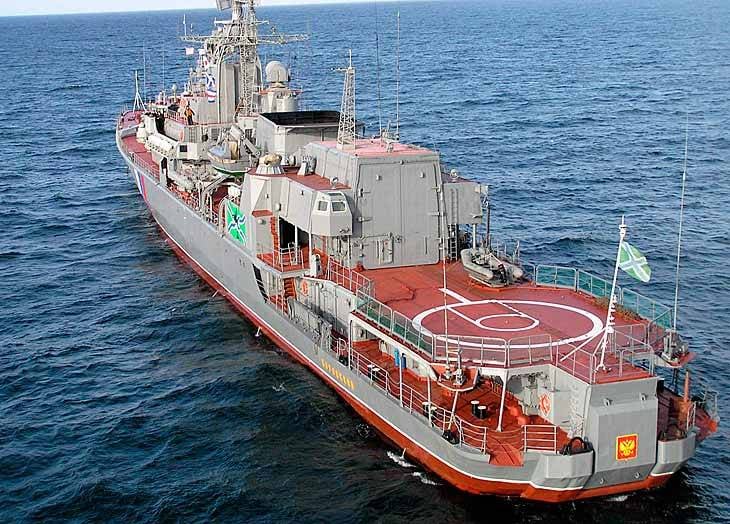
In the future, as the basis for the design of a frigate capable of operating in the ocean, the Northern PKB used exactly Nerei. This frigate was originally intended for export, India liked it, as a result, the fleet of our strategic partner was replenished with six frigates of the Talwar type.
And here the mysteries begin. It seems that frigates of the Talvar type have gained quite decent opportunities in terms of searching for enemy submarines - the under-ground gas prop APSOH and towed SSN-137. Why "like"? According to some information, the towed GUS was not installed on these ships, there is only a place to accommodate SSN-137. And if it is the “other data” that is correct, then, given the fairly average, today, capabilities of the underbody GAS APSOH, the anti-submarine capabilities of the Talvarov are very small. As the main armament, the Talvara carry the Club missiles (Caliber) on the 8, but it is not known whether the customers purchased torpedoes for them, or whether the Indians are targeting exclusively the strike version.
On the whole, there is a feeling that the Talvaras made a departure from the anti-submarine ship to the strike frigate with a strong air defense system, which is provided by one beam complex “Calm-1” and two MCP “Kashtan”, representing the export version of the Code “Kortik”. In combination with the 8 "Caliber" or "Brahmos" the Indians turned out to be a very formidable fighter.
But - for India, because Pakistan is its main enemy at sea, the largest surface ships of which - the frigates of the 21 and 22P types are inferior to the Thalwaram in the aggregate of combat qualities. At the same time, the relatively weak anti-submarine weapons of Indian ships (not the best GUS and 2 * 2 torpedo tubes with ammunition in 16 are very ancient torpedoes SET-65E and the RBU-6000 bomber) are to a certain extent compensated by the fact that the basis of Pakistan’s submarine fleet Diesel submarines rather elderly French project "Agosta". Although everything is unclear here - Indian frigates will serve for more than one decade, while Pakistan was going to acquire much more sophisticated German submarines of the 212A type ... The situation with opposition to the Chinese fleet is somewhat more complicated, but in general the Talvara are quite capable against the background of Chinese destroyers and China has not yet acquired a powerful frigate, and a powerful carrier-based deck aircraft capable of effectively destroying surface ships of any class, and it is not known when he will succeed.
At the same time, the capabilities of Talvarov for the tasks of the Russian Navy cannot be considered sufficient. Extremely important anti-submarine function came out "cut off", and the shock capabilities and air defense do not allow to count on success in confrontation with the AUG of "sworn friends".
The construction of these ships for the Russian Navy was not supposed, but then, when it became clear that the fleet replenishment rates for the 20380 corvettes and the 22350 frigates are extremely far from the expected ones, it was decided to build a series of six such ships to replenish the Baltic and Black Sea fleets - for the 3 ship to each. But then it was decided that all six ships of this project will go to the Black Sea fleet.
Of course, it was not too good to build two different types of frigates for our fleet at the same time (along with the ships of the 22350 project), but the advantages of this solution clearly outweighed the minuses - the developed Talvarov construction technology seemed to guarantee their timely entry into service. I must say that we simply could not reproduce the Talvara for the Russian Navy - export Indian frigates were partially equipped with foreign equipment, which we had to replace with domestic ones, therefore the “Indian” project in any case was subject to revision. And finally, we have an opportunity to create a ship that can not only support, but even increase the glory of its “ancestor” - the TFR of the 1135 project. Unlike the Indians, who received a series of universal ships, focused primarily on the shock functionality and air defense, we needed a universal frigate, whose main "chip" was to be anti-submarine warfare. Alas ... did not work. By and large, the 11356 project is a development of the 90 of the last century, and is not at the cutting edge of scientific and technological progress today. Well, it was all the more important to pay the closest attention to the armament and equipment of the ship, if possible improving it and increasing, thereby, the combat capabilities of the domestic frigate. Instead, it seems, the savings have prevailed "a smaller number, cheaper price."
As a result, the domestic ships of the “admiral series” (all the 11356 frigates received the names of the admirals of the Russian fleet) received, it seems, the weakest GAS of all modern surface ships of the Russian Federation (who has it, of course) - MGC-335M-03, which Opportunities were even inferior to the “Talvarov” GAS APSOH, but they did not receive the towed GUS at all. With such equipment, even the possibilities of countering the German-built Turkish boats (type 209) look somewhat doubtful, and even trying to discover the latest atomic American and non-nuclear European submarines in the Mediterranean ...
There is an opinion that the USKS for the Caliber missiles of the 11356 frigates cannot use missile-torpedoes, but it is most likely erroneous. But to use "Onyxes", "admirals" seems really incapable, therefore, there is a question about promising hypersonic missiles. PLUR of the “Caliber” family “admiral series”, most likely, can carry, but is there much point in this if there is such a weak GUS? The main problem of the "adolescent" "admirals" of the 1135 project is the presence of a "long arm" in the form of "Rasrub-B", in the absence of a "keen eye", i.e. some long-range hydroacoustic complex. And now, after so many years, we are almost as much reproducing this problem in the domestic frigates of the 11356 project.
The installation of the outdated GAK could be understood if something more modern was missing, but by 2010 r we already had new complexes like Zarya-2 and Zarya-3, installed on 20380 corvettes and 22350 frigates, respectively, and representing the next generation of hydroacoustic stations. Or were you afraid that “Zarya” was not yet brought up to standard (if they were not brought at that time)? But at least who prevented to deliver a towed "Vignette"? The only thing that somewhat mitigates this situation is the presence of a helicopter, but in general, the anti-submarine capabilities of the 11356 frigates are obviously disappointing.
Air defense. Here, too, not everything is simple. On the one hand, many lovers of the navy exhaled with relief when they saw a vertical launch system instead of a morally outdated one-launch anti-aircraft missile. But the ammunition remained the same - 24 missiles, so the gain was only in the speed of their launch (which, no doubt, is very important). At the same time, instead of the DIRECT "Dirk", or at least ZAK "Palash", which should have been expected, the frigate received only a couple of "metal cutters" AK-630М. And this is also completely incomprehensible.
On the one hand, yes, indeed, the Kortik anti-aircraft missile and artillery complex was criticized for not having time to shoot out machine guns that were not shot down by anti-aircraft guided missiles, therefore the opinion that the AK-630 and LAW "Dagger" is better than the DIRECT "Dirk". But on the frigates of the project 11356 there is no "Dagger"! The basis of the ship’s air defense is the “Calm-1” medium-range air defense missile system, but these are still slightly different complexes and their tasks are also different. In principle, the Dirk "Dirk" (and on later ships, if you dream, "Pantsir-M") in their capabilities would very organically complement the air defense system "Shtil-1". Therefore, the placement of our AK-630М instead of the SPECT, from the point of view of the author, can only be explained by petty economy.
In general, despite all of the above, the 11356 frigates of the project turned out to be quite good ships and, of course, became the long-awaited completion for the Russian Navy. But it is very disappointing that because of the completely inappropriate, “three-gross” economy in armaments and equipment, they do not fully reveal the potential inherent in them.
As is known, three ships of this type were accepted into the Russian Navy: the Admiral Grigorovich, Admiral Essen and Admiral Makarov, while the other three did not have time to get the turbines produced in Ukraine before the coup d'état that occurred in it, and now will not receive. To this day, the fate of these three ships remains unclear. Nevertheless, bmpd blog reported in June 2017 that it was decided to finish building the 11356 frigates with domestic gas turbines. I must say that the new power plant has its pros and cons.
The fact is that in the original project the use of two gas-turbine units M7H1 with power 30 450 hp was assumed. each. The М7Н1 unit consisted of two gas turbine units (GTU) - one, hp 8 450. for the economic course and the second, "afterburner", power 22 000 hp for full speed. Thus, in two “economic” turbines, the frigate developed the power of the 16 900 hp, and the total power was 60 900 hp
Now, according to the bmpd blog, the ships are planning to install two gas turbine units, each of which consists of two GTU M70FRU, having the same power 14 000 hp. Thus, the economic move will be carried out at the power of 28 000 turbines HP. ., and full speed - with 56 000 hp. What can be said about this? The maximum speed of the frigates doesn’t “slacken” much, but the economic rate will increase - however, no doubt, the range with Russian GTUs will fall - the high power of the two M70FRU will lead to increased fuel consumption. Anyway, the completion of the second three frigates 11356 for the Russian Navy can only be welcomed. It remains to hope that since the three unfinished ships of this project will still be redesigned, then there will be a place for them both for the Pantsirey-M and for the newest hydroacoustic complexes, although of course this is crazy optimism. A long break in construction, new engines and the adaptation of ships to them obviously lead to an increase in the cost of construction of frigates, and in this regard, we should not expect additional costs for improving weapons, but full savings.
Frigates project 22350 - 0 units.
Displacement - 4 500 t, speed - 30 knots, armament - 2 * 8 OHR missile family "Caliber" / "Onyx», 4 * 8 OHR SAM "Redoute», 2 * 4 324-mm torpedo tubes "Pack-NK" , 1 * 1 130-mm AU A-192M, 2 ZAK "Palash".
History the creation of the frigates of this project has been described many times and there is no point in repeating it once again. We note only that the project 22350 for some time considered the command of the fleet as the main ship of the ocean zone, designed to replace destroyers and large anti-submarine ships of the USSR. The fallacy of this concept stemmed from the hope of getting a cheap universal oceanic ship in the dimensions of a frigate, which, alas, is impossible.
At the beginning of 2000, the Northern PKB created the 21956 project, which is a destroyer with a total displacement of around 9 000 (the standard displacement is not reported, but by analogy with the same Admiral Chabanenko, it can be assumed that it was at the level of 7 500). The ship was to receive weapons from the 16 anti-ship missiles or other Caliber family missiles and 48 Launch Fort-M SAM systems, as well as eight 533-mm torpedo tubes (with the ability to launch the Caliber PLE launch vehicle), a single or double-barreled 130 -mm art installation, two DIRECT "Dirk" and a hangar for two helicopters.
Of course, it was impossible to “shove” such weapons into the “frigate” standard displacement in 4 500 t, I had to make sacrifices. Despite the use of a much lighter and more compact Redut air defense system, the number of launchers was reduced to 32. Formally, the 22350 frigate carries the same strike armament, the 16 launch missiles for the Caliber / Onyx family, but in practice this is not the case, because the frigate had to abandon 533-mm torpedo tubes in favor of the 324-mm “Package- NK.
I must say that the "Package-NK" is a very serious weapon system, but still its torpedoes are primarily anti-torpedo ammunition. It can also be used to defeat a submarine, but against it it is a “last chance” weapon, i.e. in the event that an enemy submarine was suddenly discovered several kilometers from the ship. With all the advantages of the Paket-NK ammunition, their range and speed are, of course, completely incompatible with “full-fledged” 533-mm torpedoes.
As a result, in order to be able to effectively operate against enemy submarines, the frigate of the 22350 project will have to take part of its 16 mines to take up missile-torpedoes, but the destroyer of the 21956 project? Having "large-caliber" torpedoes and without it remained a formidable opponent for a submarine.
But perhaps the most important advantage of the 21956 destroyer over the 22350 frigate is its seaworthiness and cruising range - the destroyer is able to travel almost 18,5 times more on 1,5 nodes of an economic course than the 14 frigate. According to these possibilities, the destroyer of the 21956 project is quite comparable to the American Arly Berk. This means, for example, that the destroyer 21956 is capable of escorting the moving AUG - the atomic aircraft carrier, of course, can break away from our destroyer, but then it needs to abandon its guard. But the frigate project 22350 is incapable of this. In addition, in peacetime, the policy of the Russian Federation requires ensuring the presence of its warships in order to demonstrate the flag in various regions of the world’s ocean, and the destroyer for this (due to its large size and autonomy) is adapted, of course, better than the frigate. And this is not to mention the fact that the destroyer of the 21956 project provided for a gas-gas turbine power plant without the use of diesel engines, which are very capricious for domestic manufacturers.
Nevertheless, with all of the above, the 22350 frigates of the project would be a welcome addition, because today the fleet desperately needs ships of all classes. Unfortunately, the head "Admiral of the Fleet of the Soviet Union Gorshkov", laid out by 1 February 2006 g, after 12 (!) Years of construction is still out of order. It is well known that he had long been a part of the Russian Navy if it were not for the problems with the Poliment-Redut system (which is a symbiosis of the Polimer radar and the Redut system).
As it is known, the Redut air defense missile system is the “armored” version of the Vityaz C-350, a medium-range anti-aircraft missile system that uses, among other things, missiles with an active homing head. Both of these complexes were supposed to go to the troops and the fleet a long time ago, they waited for the same Vityaz in 2012 g, but alas ... It seemed that in the second half of 2017 g, the “light at the end of the tunnel” did appear: according to the concern’s general designer Pavel Sozinov's Almaz-Antey Aerospace Defense, the Vityaz C-350 state tests should finally be completed in 2017. And in 2018, it was about to be “promoted” for export.
Alas, 2017 r is already behind, and C-350 has not completed state tests. It is clear that its maritime version, Redut, is even more complicated, therefore ... On February 3, 2018 Mr. USC President Alexei Rakhmanov told reporters, literally, the following:
The USC President also expressed the hope that the “Admiral of the Fleet of the Soviet Union Gorshkov” would be commissioned before the end of 2018. Alas, there are certain doubts, and the matter is not only in the Redut system or the Polarmar radar. According to a highly respected resource flotprom.ru, Kolomna diesel engines “installed” at the “Gorshkovo” “distinguished themselves” - one of them broke 23 December 2017, repair work is carried out directly in the engine room. Separate parts of the engine are sent to Kolomna to conduct an audit and repair, and, if necessary, a replacement. It is also to be sent to the factory details of the crankshaft. According to the sources, it is still not necessary to completely "take out" the diesel from the ship, cutting the side, but ... well, we will hope for the best.
Of course, sooner or later, the Admiral of the Fleet of the Soviet Union Gorshkov will still be commissioned - not in 2018, but in 2019 g, but with subsequent ships of the series the situation is more complicated - due to Ukraine’s refusal to supply us with gas turbine units left without new ships. For some reason, in a country that speaks about the creation of high-tech industries, and which was going to build dozens of corvettes and frigates, no one bothered to create high-quality diesel engines and its own gas turbine production. The fleet knew the “wisdom” of this decision in full - now work on creating its own gas turbines is in full swing, but their production will be very limited in the coming years.
According to the HPN 2011-2020, the 6 frigates of the 11356 project and the 8 frigates of the 22350 project were to be part of the fleet; in fact, we have only 2018 frigates of the 3 project in 11356 g. With the highest probability, the remaining 3 of the ship of the “admiral” series will be commissioned during the HPV 2018-2025. As for the Gorshkovs, the 4 of May 2016 of Mr. S.K. Shoigu said that by 2025 the fleet should receive 6 of such ships, but, apparently, the plans changed again. The fact is that at present four ships of this type are in different stages of construction and completion - in fact, the Gorshkov itself, and three more frigates laid down in 2009, 2012 and 2013, respectively. More ships of this type were not laid, and there are no rumors about their imminent start of construction.
But there was information about a certain "Super-Gorshkov", or the frigate of the project 22305M. It seems that the leadership of the country and the fleet has abandoned attempts to “ram the nevi” into a minimum displacement, and the only thing that is known about the new project is that it will be significantly larger than the frigates currently under construction. The total displacement of the "Gorshkovs" is indicated in 5 400 t., While the same indicator for the 22350М project should be ... and then the intrigue begins. According to the first data on the 22350M project, its full displacement will be 1,1 thousand tons more than that of the Gorshkov and will be 6 500 tons. Later, information appeared that the total displacement of the new ship will be from 6 500 tons. A in the summer of 8, the deputy commander-in-chief of the Russian Navy for armaments, Vice Admiral Viktor Bursuk, at the International Maritime Defense Show in St. Petersburg, stated that the displacement of the 000М frigate would be "around 2017 22350 tons". Thus, we see that the 8M project is gradually developing in the direction of growth to the size of a full-fledged destroyer.
In the network there is a photo in which (perhaps!) The model of the “Super-Gorshkov” is demonstrated.
Judging by the proportions, this ship is comparable in size to the destroyer of the 21956 project, which we discussed above. A minute of glory - that the ship like the destroyer of the 21956 project suits our fleet much better than the small-sized frigates of the 22350 project, we wrote in detail in August 2016 g in the article “Shipbuilding program of the Russian Navy, or Very Bad Premonition (part of 3)” and the author I am very glad that the Defense Ministry of the Russian Federation eventually came to the same conclusions.
Nevertheless, the situation for the next ten to fifteen years remains extremely depressing. Because on 1 December 2015 r we had 19 destroyers and 2 frigates of another Soviet bookmark, including:
BOD project 1155 and 1155.1 - 9 units;
Destroyers of the project 956 - 8 units;
BOD project 1134B - 1 units;
TFR of the 01090 project (in the past - BOD of the 61 project) - 1 units;
SKR of the 11540 project - 2 unit.
And all in all, the 21 ship, of which the 2030 BOD of the 7 project, the Admiral Chabanenko of the 1155 project and 1155.1 of the TFR of the 2 project, which we described at the beginning of the article, will remain at 11540 g at best. At the same time, up to 2025 g and taking into account the set in 2016-2018. At best, we will get the 6 frigates of the 11356 project and the 4 frigate of the 22350 project. It seems to be not so bad - if you just forget that the frigates of the “admiral” series are absolutely no match for a destroyer or anti-submarine ship, but only descendants of the 1135 patrol ships, that is, ships of a lower class than Soviet BOD and destroyers, and consider them as some kind of full replacement can not be. And if you forget about the unreliable Kolomna diesel frigates of the 22350 project ...
And what about the newest frigates of the project 22350M? Generally speaking, it is they who will have to become those ships that can replace today's BOD and destroyers, but ... To date, none of these ships have been contracted, i.e. There are no contracts for their construction. Worse, even the 22350 project itself, in general, does not exist. And in order to finally understand what stage the works on the 22350M project are now in, we quote the press service of the United Shipbuilding Corporation from 3 July 2017. From their words:
That is, in fact, in the middle of last year, it is not that the project, but even the technical task for the project was not formed. And when all this will be, and when the first frigates (in fact, destroyers) of the 22350M project will stand on the stocks, it is completely unknown.
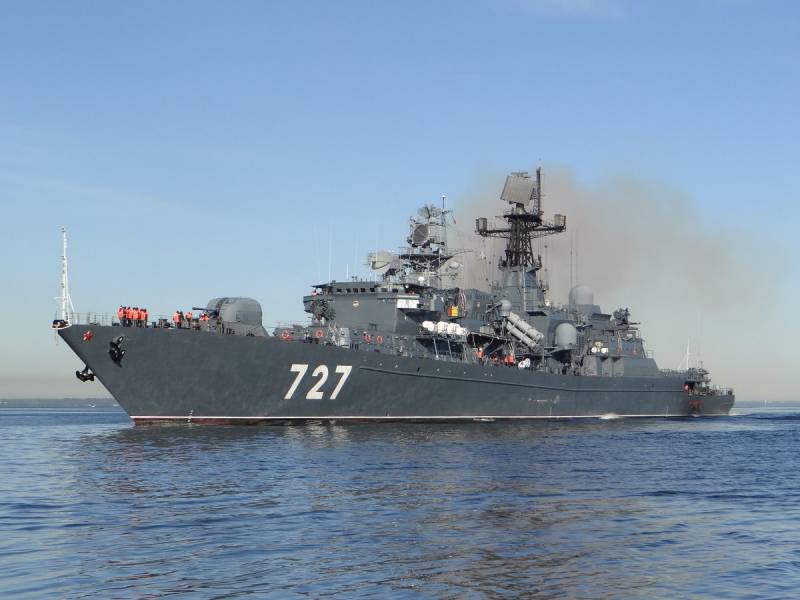
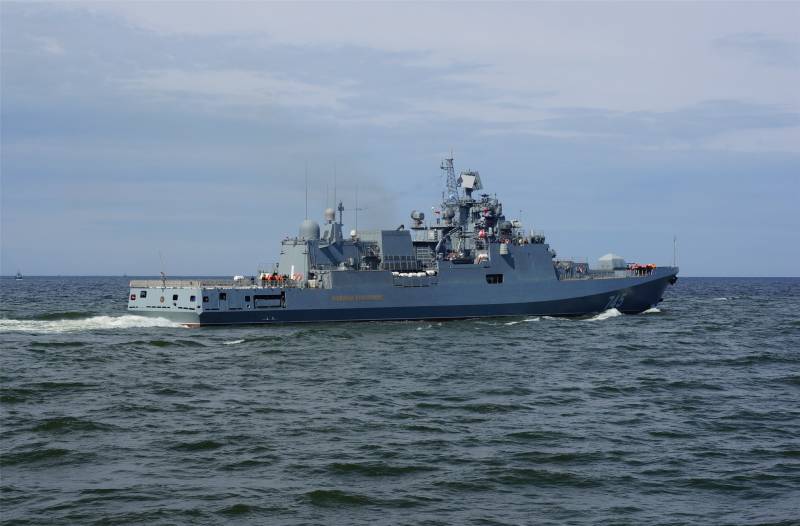
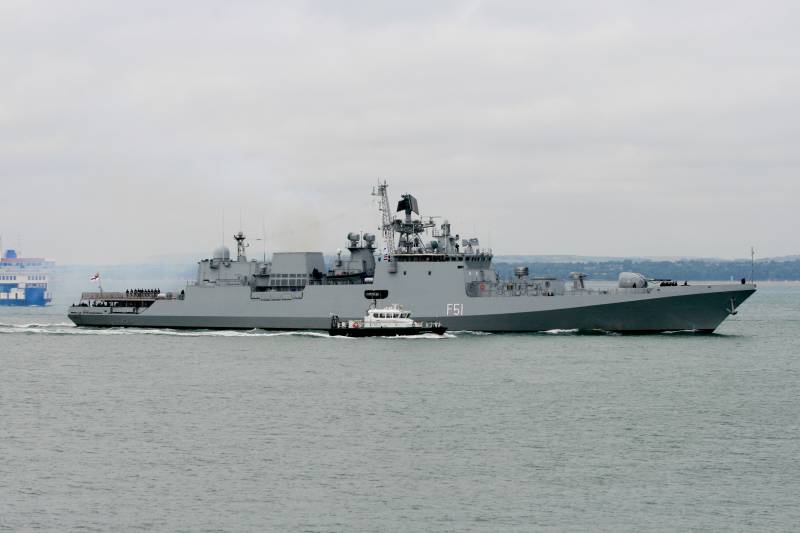
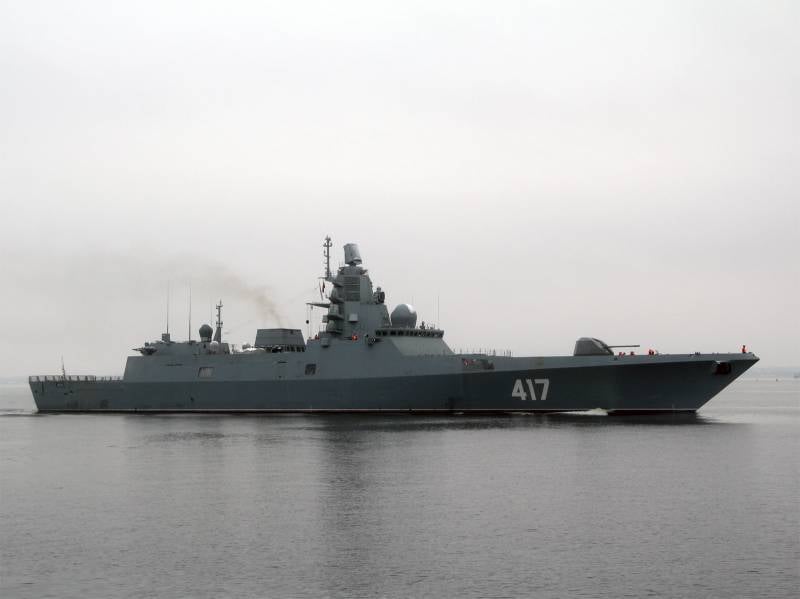
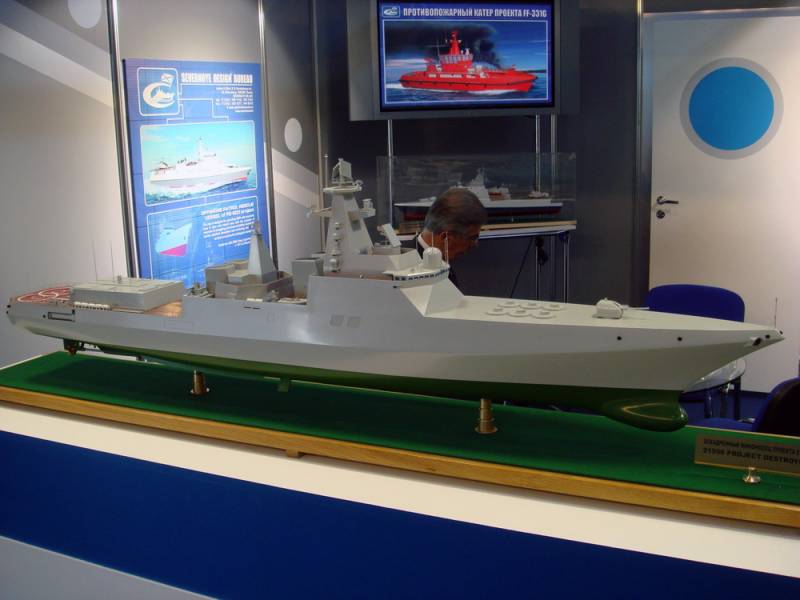
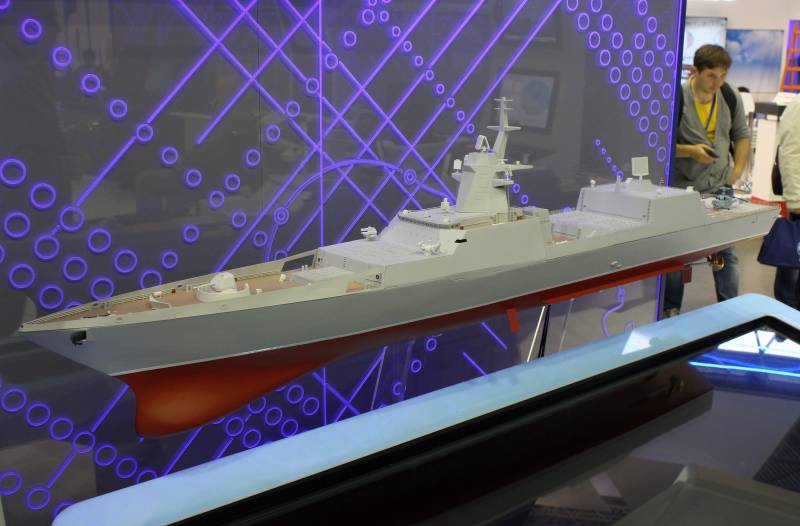
Information